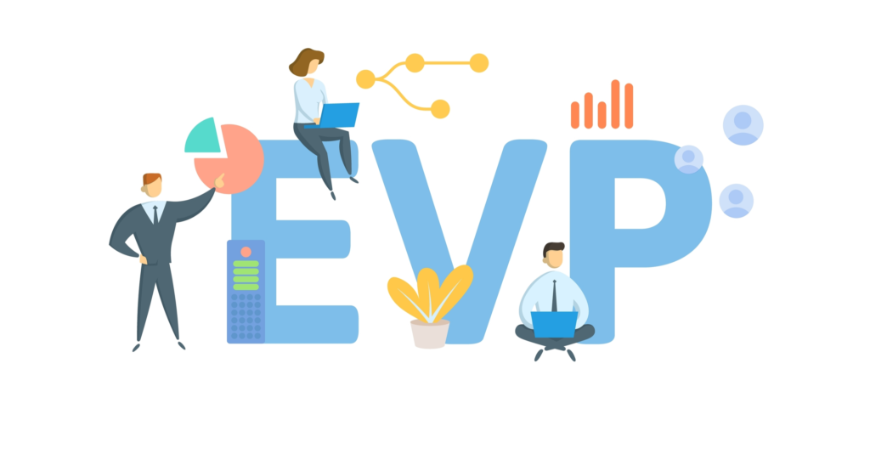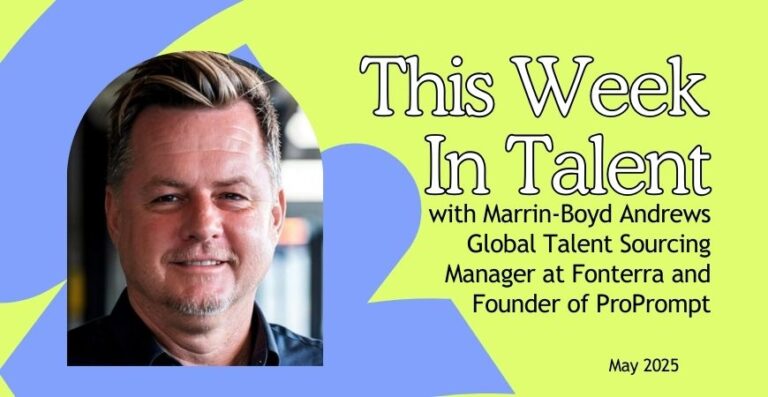In my last article, I touched on how the pandemic has brought into sharp focus the need for organisations to re-evaluate the experience they’re providing to employees and candidates.
EVP is just one piece of that puzzle.
To be clear though, I absolutely believe an organisation needs an EVP – a clear and memorable promise of the value you’ll provide to employees in return for their contribution. You can’t market or sell something when you don’t know the benefit it provides your audience. But at the end of the day, it is just a set of marketing messages. It isn’t solving anything.
Whilst execs are wanting (and needing) a provocative EVP to help build a strong employer brand, there are some serious limitations. Your EVP can only be as good as your employee experience and offering.
Although the timing may not be right, if you find yourself in the position where you need to do something right now – how should you respond?
1. Focus more on a creative execution
Find a hook that catches your audience’s attention or your point of salience in the market. Run a campaign to make some noise and attract attention, with the aim of it resulting in an increase in job applications to fill role vacancies.
Note though, this is not an EVP but rather a creative marketing campaign. Brief your creative partners/agency accordingly.
2. Design a future-focused EVP
If your current employee experience doesn’t stack up to your claims, focus on an EVP that celebrates the future state with the value offer focusing on the journey. Position your organisation in the way you wish to be, and be seen, to begin to build this image. This approach is particularly useful when you’re going through a cultural transformation and wish to attract a different type of employee.
Two caveats
Firstly, this approach brings a risk of an EVP becoming too organisational-focused. I often see the desire for strong strategy alignment overtaking the focus on employee needs and desires. When current and potential talent don’t see value in the offer, they’ll look for an organisation that is perceived to provide them greater personal benefit.
Secondly, there’s a risk of dialling up the level of aspiration too far. By selling a dream that’s far from reality, you’ll create dissatisfaction amongst current employees, resulting in a loss of trust and credibility.
And with employee advocacy being one of the most effective tools in employer marketing, your people must believe in and rally behind your EVP.
3. My preferred recommendation for those embarking on an EVP development journey
Position this project as a marathon, not a sprint. Make it clear that a new EVP won’t solve your people problems overnight – or even this quarter. Warn execs that they likely won’t be excited about what you uncover today in your employee research. You are giving employees an opportunity to tell you how satisfied they are, and let’s face it, life isn’t full of unicorns and rainbows right now.
This first round of research will uncover the new needs of your employees and how well you are delivering on them in comparison to your competitors. You will identify strengths as well as weaknesses.
At this point, as a leadership group, you can collectively make a decision about whether these current strengths are what you want to be known for as an employer. If they are, that is AMAZING! But if this proposition isn’t compelling or differentiated enough, then you need to be clear on what you want to be known for, then make a decision on what commitments you’re willing to make to close the gap on the aspired state.
You also need to craft an EVP that provides an authentic and credible view of your organisation today. By leaning into your (sometimes harsh) realities, you will appeal to those who are excited by where you’re at and what you’re doing, and repel those who are looking for something different (which is important, as you’ll quickly lose them anyway).
Now you can also build a degree of aspiration into your EVP as you know with confidence (and can evidence) that’s the direction and focus of the business, which will soon become a reality.
As other business stakeholders work on improving the employee offering (delivering on the commitments made above), focus on communicating your EVP – find creative ways to stand out from all the noise and get noticed in this cluttered market.
Talent are motivated by something more than a good hybrid-working policy. After facing so many challenges in all facets of life, they couldn’t be bothered with pointless projects, useless meetings, and corporate politics that hold no real value. They want to devote their time and brainpower to things that are actually meaningful and perceived to provide a positive return to them. Your focus in this next phase should be on marketing your organisation to create greater awareness and consideration of your organisation as an employer. Show talent that you are worth their time.
The home stretch
And now we are onto the last leg of the marathon. Once you have improved your employee experience and offering in the areas that matter most to your critical talent segments, re-do your EVP research. Only when you have built out a more compelling and differentiated product (your employee offering) can you truly achieve the EVP that your organisation is hoping for.
A solid foundation of research is so important in crafting an authentic EVP to communicate why your organisation is a great place to work. When embarking on an EVP development project, it is important to understand the views of your leadership team, but to also ensure that they can distinguish between aspiration and reality.
There will likely be challenges and speed bumps along your journey, but being armed with this knowledge, you can set more realistic expectations about what your EVP project is (and isn’t), and how and when it’ll solve your employee attraction and retention issues.
This article originally appeared in Employer Bandwagon and has been republished here with permission.
Keen to find out more?
Join Brie Mason at ATC2022, together with Clint Williams, Talent Leader at Lion, and Sarah Halaseh-Russo, People Experience at Officeworks, as they discuss the need to gain alignment on a change in EVP mindset and approach, and a redefinition of roles and responsibilities.







